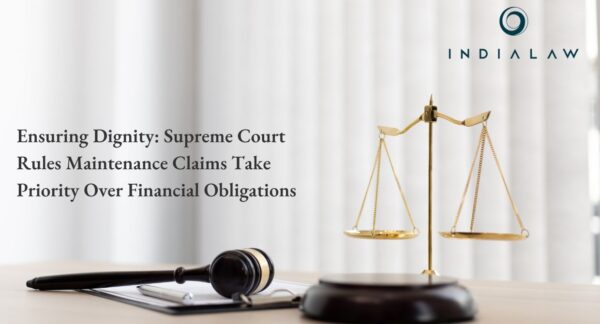Revolutionizing Liquidation: IBBI’s Centralized eBKray Platform to Boost Transparency and Recovery in India’s Liquidation Process


Introduction
The Insolvency and Bankruptcy Board of India (IBBI) recently issued a circular aimed at overhauling the asset sale process within the Indian liquidation framework. Announced on October 29, 2024, this circular mandates the centralized listing and auction of assets for companies undergoing liquidation through a single platform—the eBKray system.
Table of Contents
Background and Rationale for a Centralized Platform
Traditionally, the sale of assets in Indian liquidation processes has occurred across multiple auction platforms, with each case typically using a different system. Regulation 33(1) of the IBBI (Liquidation Process) Regulations, 2016 mandates that liquidators sell corporate debtor assets by auction. Schedule I of the same regulations adds that the Board will specify a date from which all asset sales should be conducted only on electronic auction platforms authorized by the IBBI. This transition is expected to bring several advantages
- Reducing Information Asymmetry: Under the previous model, asset details would only be made public at the time of the auction notice, which often left potential buyers with insufficient time to assess asset values accurately. This lack of pre-emptive information created information asymmetry, putting buyers at a disadvantage in valuation and decision-making. As a result, the recovery rates on liquidated assets were often lower than expected.
- Increasing Recovery Rates: The current system of multiple platforms often leads to limited buyer reach, which, in turn, can result in lower asset recovery rates for creditors. By consolidating all assets under a single, centralized platform, the IBBI aims to enable more competitive bidding and improve recovery outcomes, ultimately enhancing returns for creditors.
- Enhancing Transparency: A centralized platform where asset listings are available to the public continuously, rather than being restricted to specific auction announcements, provides better transparency in the liquidation process. Buyers gain better access to data and are empowered to make well-informed bids.
The Role of the eBKray Platform
To address these challenges, the IBBI has partnered with the Indian Banks’ Association (IBA) and the PSB Alliance Private Limited—a consortium of 12 public sector banks—to make the eBKray platform the primary auction site for assets under liquidation. eBKray, a platform established to handle auctions under the SARFAESI Act for assets mortgaged to public sector banks, has managed asset auctions for the past five years. Its integration within the IBC liquidation process is expected to leverage this experience and technological foundation, helping standardize and centralize the asset sale process.
This partnership between the IBBI and PSB Alliance reflects a broader strategy of streamlining financial and asset management systems within India’s banking and insolvency sectors. The eBKray platform has already demonstrated effective operational capacity in handling auctions, making it a suitable partner for the sale of corporate debtor assets under liquidation. By leveraging this platform, the IBBI is not only addressing the challenges in asset auctions but also fostering a more efficient liquidation ecosystem in line with global best practices.
eBKray Platform Features and Benefits
The eBKray platform is designed to support a comprehensive listing and auction process, catering to the diverse needs of corporate debtors, liquidators, and buyers. The features of this platform include:
- Detailed Asset Listings: The platform will host exhaustive asset information for each corporate debtor under liquidation. These details include photographs, videos, geographical coordinates, lien or attachment status, and a projected auction date. Such transparency offers prospective buyers ample time to study the assets, aiding in realistic asset valuation.
- Real-Time Accessibility: Unlike traditional auction notices that restrict asset data disclosure to specific times, eBKray offers continuous access to all asset listings. Buyers can examine asset details well in advance, which minimizes rushed decisions and allows for thoughtful consideration, fostering greater bidder confidence and participation.
- Technology-Driven Efficiency: By integrating advanced digital tools, the platform aims to streamline the auction process, minimize administrative overheads, and simplify workflows. This digital-first approach not only makes auction management more efficient but also reduces costs associated with the liquidation process.
- Maximizing Returns for Creditors: With more bidders likely participating due to enhanced accessibility and transparency, the platform is expected to foster competitive pricing for assets. This competitive environment has the potential to maximize returns, directly benefiting creditors awaiting recoveries from the liquidation.
Implementation Phases and Access
The platform’s rollout is planned in two phases: an initial pilot and a subsequent full launch. This phased approach allows the IBBI to fine-tune platform functionalities based on user feedback during the pilot phase. Insolvency Professionals (IPs), or liquidators, can access eBKray using their existing login credentials on the IBBI platform. Meanwhile, potential buyers can explore the platform independently through the website (https://ebkray.in). The IBBI has also made a comprehensive FAQ and usage guide available to aid buyers and IPs in navigating the platform effectively.
Key Directives for Insolvency Professionals (IPs)
The circular specifies certain obligations for IPs managing liquidation processes, ensuring that they adopt the eBKray platform consistently and promptly. The directives include:
- Listing Unsold Assets: All IPs must list the details of unsold assets from ongoing liquidation cases on the eBKray platform. This step ensures that assets from existing cases also benefit from the improved reach and transparency offered by the centralized platform.
- Timely Listing for New Cases: For liquidation cases initiated after the circular’s issue, IPs are required to list all assets on the platform within seven days of submitting the Asset Memorandum to the Adjudicating Authority. This prompt listing further enhances the visibility and accessibility of assets for potential buyers.
- Optional Platform Use in Ongoing Cases: For cases already in progress, IPs have the option of using the eBKray platform for asset auctions, although it is not mandatory. This flexibility allows IPs to transition to the new system smoothly, particularly if auctions are already underway on other platforms.
The directive emphasizes the IBBI’s goal to enhance the liquidation process through consistent asset listings and auction management on eBKray. With a uniform approach across cases, the platform is expected to strengthen the overall efficiency and effectiveness of the asset disposal process within the IBC framework.
Legal Framework and Authority
This circular is issued under Section 196 of the Insolvency and Bankruptcy Code, 2016, which provides the IBBI with the authority to regulate and direct liquidation practices within India. Section 196 empowers the IBBI to issue directives to streamline the liquidation process, ensure transparency, and protect the interests of all stakeholders. The requirement for a centralized listing and auction platform falls within the IBBI’s mandate to create a structured and consistent approach to asset liquidation, benefitting creditors, debtors, and potential buyers alike.
Expected Impact on the Insolvency Ecosystem
The implementation of the eBKray platform as the single listing and auction site for liquidation cases under the IBC is expected to bring several long-term benefits:
- Enhanced Market Confidence: By fostering a transparent, well-organized auction process, the IBBI aims to build trust among bidders and creditors, encouraging greater participation and engagement in the liquidation market.
- Improved Recovery Rates: The increased transparency and competitive environment on eBKray are likely to drive up asset prices, resulting in higher recovery rates for creditors. The platform’s wide reach also improves the chances of finding suitable buyers who may be willing to offer more competitive prices.
- Streamlined Asset Disposal Process: A single, standardized platform for all liquidation cases reduces administrative complexity for IPs, allowing them to focus on efficient asset disposal rather than managing disparate auction systems.
- Alignment with Global Standards: Centralizing asset auctions under one platform brings India’s liquidation practices closer to global insolvency standards, where centralized, technology-driven platforms are commonly used to enhance efficiency and outcomes.
Conclusion
With a phased rollout beginning on November 1, 2024, the eBKray platform represents an important step toward achieving streamlined, transparent, and competitive asset auctions that will benefit creditors, buyers, and the Indian economy as a whole. Through this initiative, the IBBI highlights its commitment to meet global best practices and foster a more robust financial ecosystem.




